
Intel: Nehalem Chronicles
Intel had a funny old time in Taipei this year, as many of its key partners were more than happy to spill the beans on everything the chip maker was planning this year – and next, in some cases. First came the release timeframe for the company’s next-generation P55 chipset and Lynnfield processors.They’re on schedule for release in early September – and partners were keen to give us 1st September as the date. As always, dates can change in the run up to a launch, but almost every board manufacturer we spoke to were either specific to this date or suggested ‘early September’.
Just a day later, we learned that Intel was planning to discontinue almost all of its Core i7 processors as soon as Lynnfield and P55 come to market, leaving only the newly-released Core i7-975 on the platform. We were told that motherboard manufacturers are moving their focus on X58-based boards to high-end, workstation and SMP-class products.
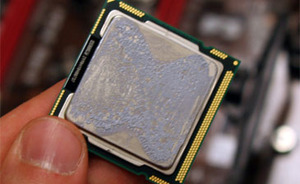
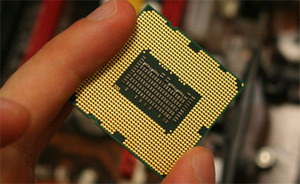
An early Intel Lynnfield processor
Intel denied this over breakfast on the first day of the show, saying that only the Core i7-940 would be discontinued in the near future. The company was adamant that both the Core i7-920 and i7-950 would exist and remain available long after Lynnfield launches – it’s a shame, though, that Intel roadmaps seen by bit-tech seem to disagree with that statement.
Only the Core i7-975 and a future 6-core Nehalem chip will exist on socket LGA 1366, with Lynnfield taking over the more affordable segments of the higher-end of the market. It’s a good thing, then, that Lynnfield is going to overclock like a demon if early tests indicate real performance of retail CPUs – several sources at motherboard manufacturers said they’d been able to hit 5GHz with just air cooling.
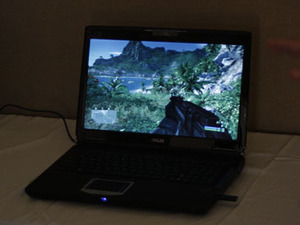
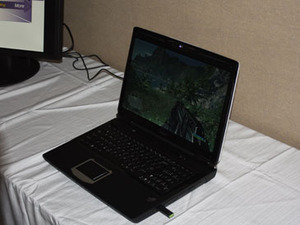
The first Nehalem based laptop ever to be shown uses a 32nm quad-core Clarksfield chip and an undisclosed Nvidia GPU
Moving away from the shenanigans surrounding Core i7 and Lynnfield for a moment, Intel talked about much more than just that. In its Grand Hyatt hotel suite, the company demoed the first Clarksfield laptop, which featured a 32nm quad-core Nehalem-based processor in a relatively small form factor with eight threads thanks to HyperThreading technology.
The engineering sample from Asus also featured an undisclosed Nvidia mobile GPU inside, which was able to handle Crysis at 1,920 x 1,080 fairly smoothly – could this be one of Nvidia’s soon-to-be released 40nm chips? Along with not disclosing details of the Nvidia GPU, Intel also refused to go into any detail on the CPU inside the machine – it’s a Clarksfield chip, and that’s all we know. No clock speed, no cache sizes and definitely no release date, although one spokesperson did suggest that “[Clarksfield] would be out before the end of the year.”

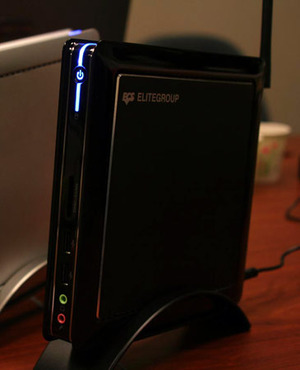
ECS's pint-sized Pineview box
Intel’s partners also showed off the first Pineview-based machines, including a pint-sized box from ECS. This box features a dual-core Pineview chip, which includes an integrated graphics chip and a DDR2 memory controller, and a decent amount of connectivity when you consider it’s an Atom-based box.
There’s DVI, VGA, four USB 2.0 ports, two channel audio, an SD card slot, 802.11 wireless and Gigabit Ethernet. The reason Intel has had to adopt DVI for this platform is to obtain Windows 7 WHQL certification – none of the current nettops will receive Microsoft’s rubber stamp of approval for that reason.

MSI MPG Velox 100R Chassis Review
October 14 2021 | 15:04








Want to comment? Please log in.